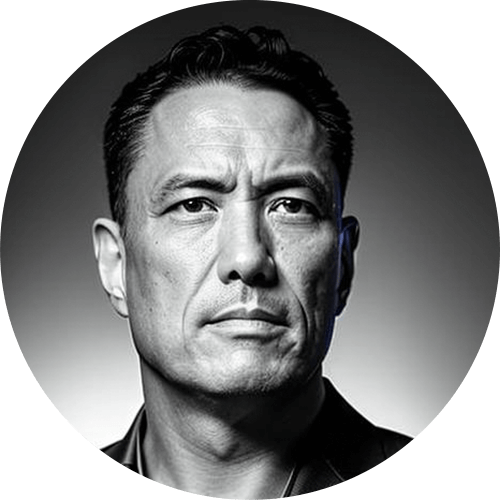There is one constant: everything is subject to change, whether we like it or not. In order to optimize organizational performance, companies must be able to change. However, in many cases employees and managers find it difficult to embrace change, and the transition can be experienced as stressful or impossible.
In organizations, constant demographic changes in the workforce (younger Millennials and Gen Z), in underlying technologies, business fundamentals, strategy and processes need to be managed. The move from the current context into a new context becomes a necessity. As more changes occur, employees should be given more performance feedback on the changes that need to be made, creating the need for a continuous improvement process.
Gamification is uniquely suited to organizational change management. In this article, we’ll cover what change management is, a couple of basics around gamification and its benefit for transactional workforces, and why change management and gamification are continuous processes.
What is change management?
Change management is about transitioning into a desired future state. Change is a structured, multi-phase process, starting from defining the vision for a change, to creating a strategy to effect it and motivating the actual change. Motivating the workforce is essential to change management and is by no means a trivial task to accomplish. This is where gamification comes in as an integral part of change management.
Why is employee buy-in a speedbump for change management? In short, we are creatures of habit. Comfort zones and habits matter. People dislike change. Yet, as change cycles are becoming shorter and companies require agility to react quickly, being able to efficiently carry out change and transformational processes becomes strategic.
What is Gamification?
Gamification is the use of game mechanics (such as leaderboards, points, badges, levels, etc.) to drive motivation and engagement, influencing performance and creating accountability. It isn’t play or a game per se; rather, gamification leverages these game-related techniques to drive desired behavior. These game mechanics appeal to both intrinsic and extrinsic motivation and satisfy basic human psychological needs: a sense of competence, autonomy, and relevance.
While frequent flyer miles and other forms of consumer gamification have been around for years, these simplistic programs rely on extrinsic reward. Gamification uses the “third drive” – intrinsic motivation – which is a much stronger driver of continuous engagement. It also uses sophisticated game mechanics and takes a long-term approach to behavioral changes and employee work-habit creation.
Gamification – through its power to communicate goals and give real-time feedback about employee achievement – is an ideal tool for change management, enabling smooth structural change. Gamification is a powerful tool for transformational change. It can be used to support better user engagement and feedback, giving clear indicators of process improvement. For instance, to change work habits, gamification can help explain the change through gamified e-learning and support the change by driving engagement and helping employees form new habits.
Gamification and Change Management as a Continuous Process
In the past, change management was a planned and somewhat static process, with three phases:
- unfreeze the organization,
- change it; and then
- refreeze the new configuration.
However, as changes become more frequent an alternative approach is process-centered, where organizational change is continuous and evolving. In this approach, the organization constantly needs to adapt to an unpredictable and rapidly changing environment. The focus isn’t just on one grand change to be implemented and then frozen, but on many small adjustments that can produce significant change over a relatively long period. In this aspect, change management is a subtle process that is ongoing, a prerequisite for a healthy organization that can detect and react to changes in its environment.
The Gamification Toolkit for Change Management
Gamification can drive transformational journeys for the workforce, whether a post-merger culture change or a re-alignment of processes and habits. In all these cases the gamification efforts is centered on adoption.
The decision to invest in a new platform or system is usually driven by technology considerations. Yet, the question of how people will react to this change is often not taken seriously. Even if there is a structured, people-focused process as part of the change management strategy – training, awareness, and briefings – people will likely forget a lot of what they were taught by the time the system goes live.
This is where gamification as part of the change management process comes in. Gamification can motivate people to perform new activities, such as learning or other tasks. At some point, the new behavior stops being new. It just becomes “business as usual,” or a daily habit, and the most appropriate way to behave in the organization. This, in turn, positively affects the change management process and the overall corporate culture.
Gamification and Transactional Workforces
Gamification works well for the transactional workforce, whether it is customer–facing employees, or back-office knowledge workers. Some of these employees don’t directly work for the company; rather, they are what we call “the extended workforce” – contractors or part of managed services. These jobs can be repetitive and disengaging, and the performance differences can vary greatly between employees. Helping average performers become top performers can have an incredibly positive impact on the organization’s morale and bottom line.
For instance, let’s take a call center agent named Tim. While he is a hard worker, Tim has had some trouble meeting his KPIs. He has been less motivated, and his engagement isn’t what it used to be. But as part of an overall change management strategy, the call center implemented gamification as part of its new performance management process. Tim now has real-time insights into his progress on his KPIs. When Tim completes gamified learning modules (picking up new skills) and meets certain metrics, he will receive badges, pass levels, and place higher on the leaderboard. Since Tim is competing with other call center agents, he is now much more engaged and motivated to move to the top of leaderboard and receive recognition and rewards. The platform also features employee contributions and knowledge sharing, so Tim is learning from other employees, and that is also helping his performance.
By changing the game when it comes to moving the middle (agents like Tim), the call center changed employee behaviors, and now has a much more engaged workforce (and is therefore less vulnerable to voluntary attrition) and is delivering higher CSAT scores and other KPIs.
In the past, transformational journeys took three years. Today, these journeys need to happen quickly, and they can with gamification. This doesn’t just apply to not-so-new hires or veteran employees. Part of a change management strategy might require accelerating time from onboarding to proficiency. Gamification has proven to be an incredibly valuable resource in this capacity.
What type of Adoption is Required for Change Management Gamification?
In consumer gamification – such as frequent flier miles or similar campaigns – gamification has an impact on performance even if less than 5 or 10 percent engage with it. However, in organizations, anything less than 75% engagement with new systems or processes isn’t enough for change.
That’s why gamification for change management requires a comprehensive, robust game design and not a game mechanic slapped on top of an existing system. Another difference compared to consumer gamification is that organizational change gamification should be long-running and constant. Quick adoption wins are needed, but longer-term engagement needs to be made, as well as having the gamification for change management there for any additional change management needs in an environment of continuous improvement.
If you are ready to gamify your organization’s change management process, we recommend you download the 2024 gamification guide and this buyer’s guide.
Why Centrical Changes the Game for Change Management
For over a decade, Centrical has partnered with enterprises across the globe to create more motivated, engaged, and higher-performing frontline teams. The Centrical platform offers a number of features, including AI-powered microlearning, augmented coaching, and real-time performance management. Centrical brings these elements together by going beyond the leaderboards and leveraging advanced gamification, which engages and motivates employees with points, badges, level progression, rewards and recognition, and more.
If you are interested in leveling up your change management strategy with gamification, stop by for a quick preview of what we do, and request your personalized demo today.
Engage and motivate your frontline teams
Improve performance with an AI-powered digital coach
Deliver world class CX with dynamic, actionable quality evaluations
Boost performance with personalized, actionable goals
Nurture employee success with the power of AI
Listen and respond to your frontline, continuously
Drive productivity with performance-driven learning that sticks
Drive agent efficiency, deliver client results
Keep tech teams motivated and proficient on products and services while exceeding targets
Maintain compliance while building customer happiness and loyalty
Enlighten energy teams to boost engagement
Engage, develop, and retain your agents while driving better CX
Improve the employee experience for your reservations and service desk agents







 Madeleine Freind
Madeleine Freind
 Natalie Roth
Natalie Roth Linat Mart
Linat Mart












 Doron Neumann
Doron Neumann Gal Rimon
Gal Rimon Daphne Saragosti
Daphne Saragosti Ella Davidson
Ella Davidson Ariel Herman
Ariel Herman Ronen Botzer
Ronen Botzer